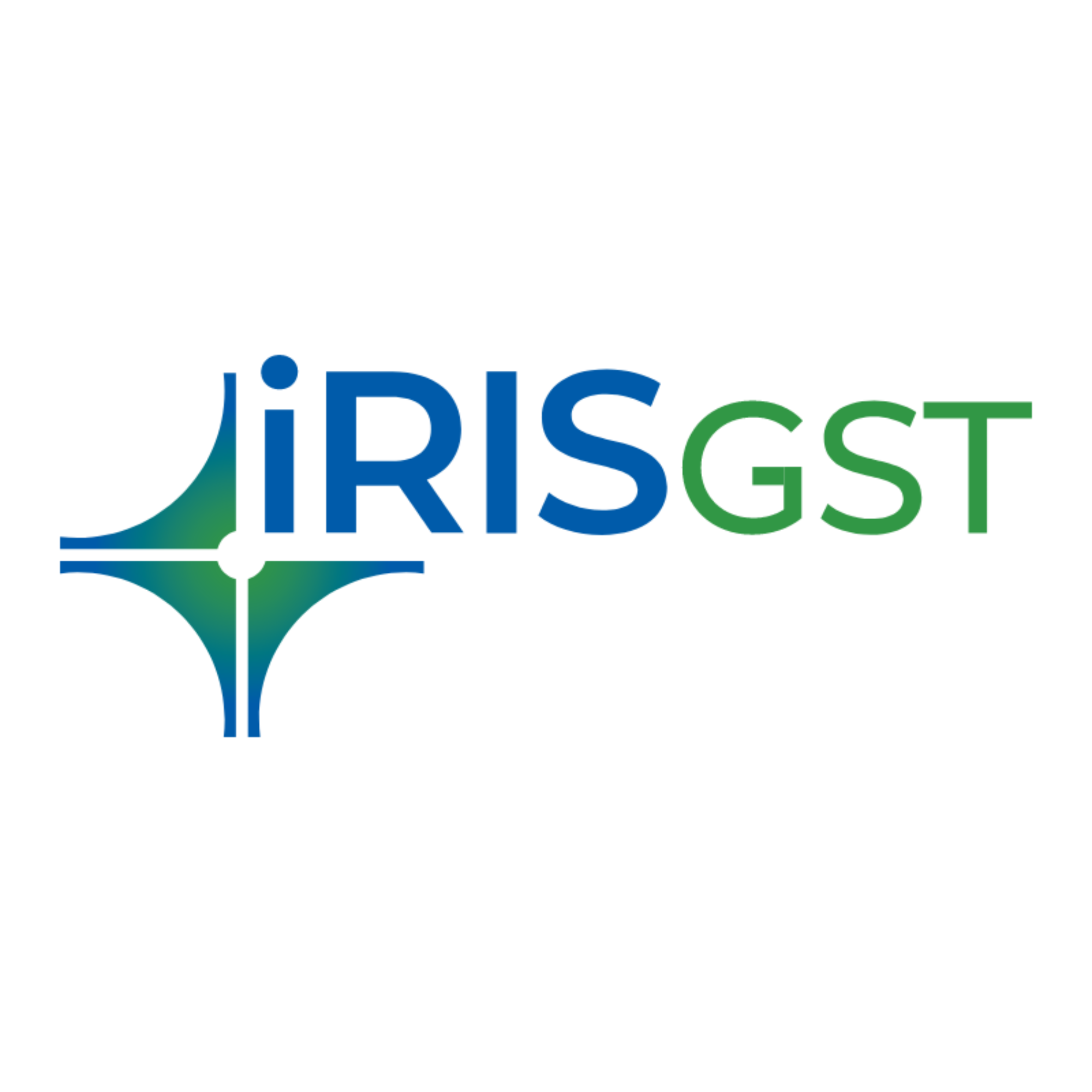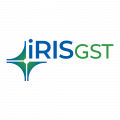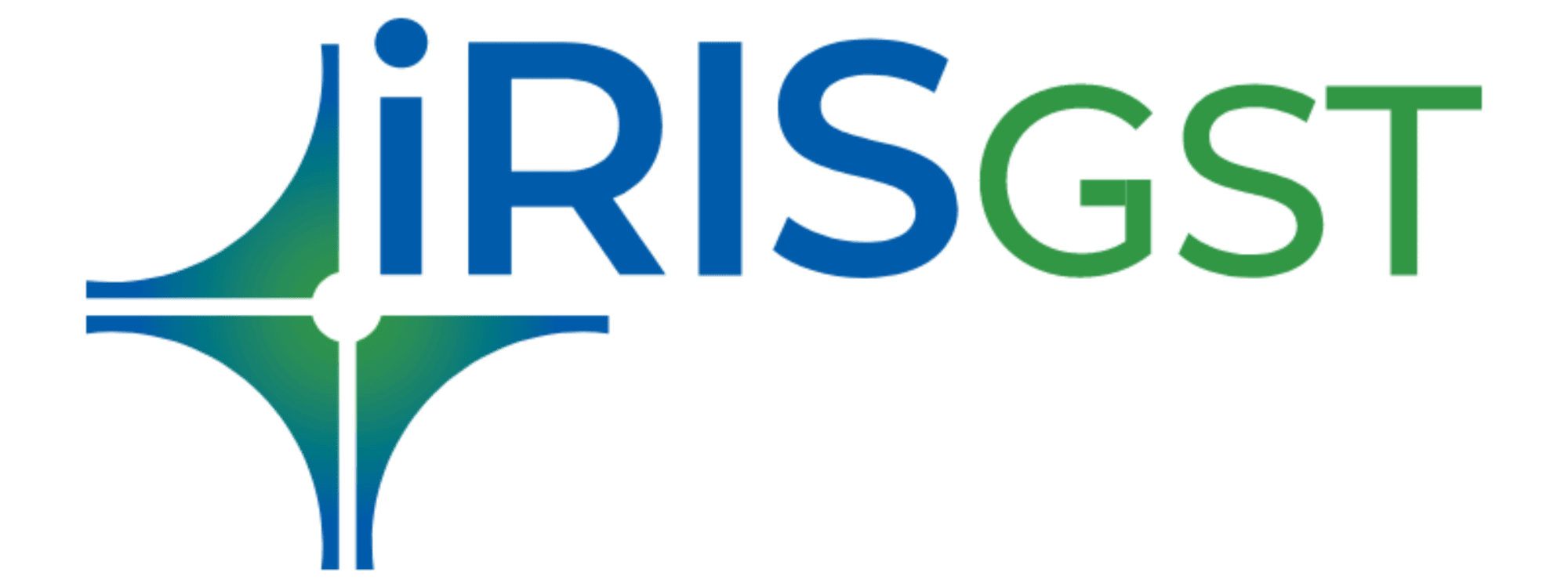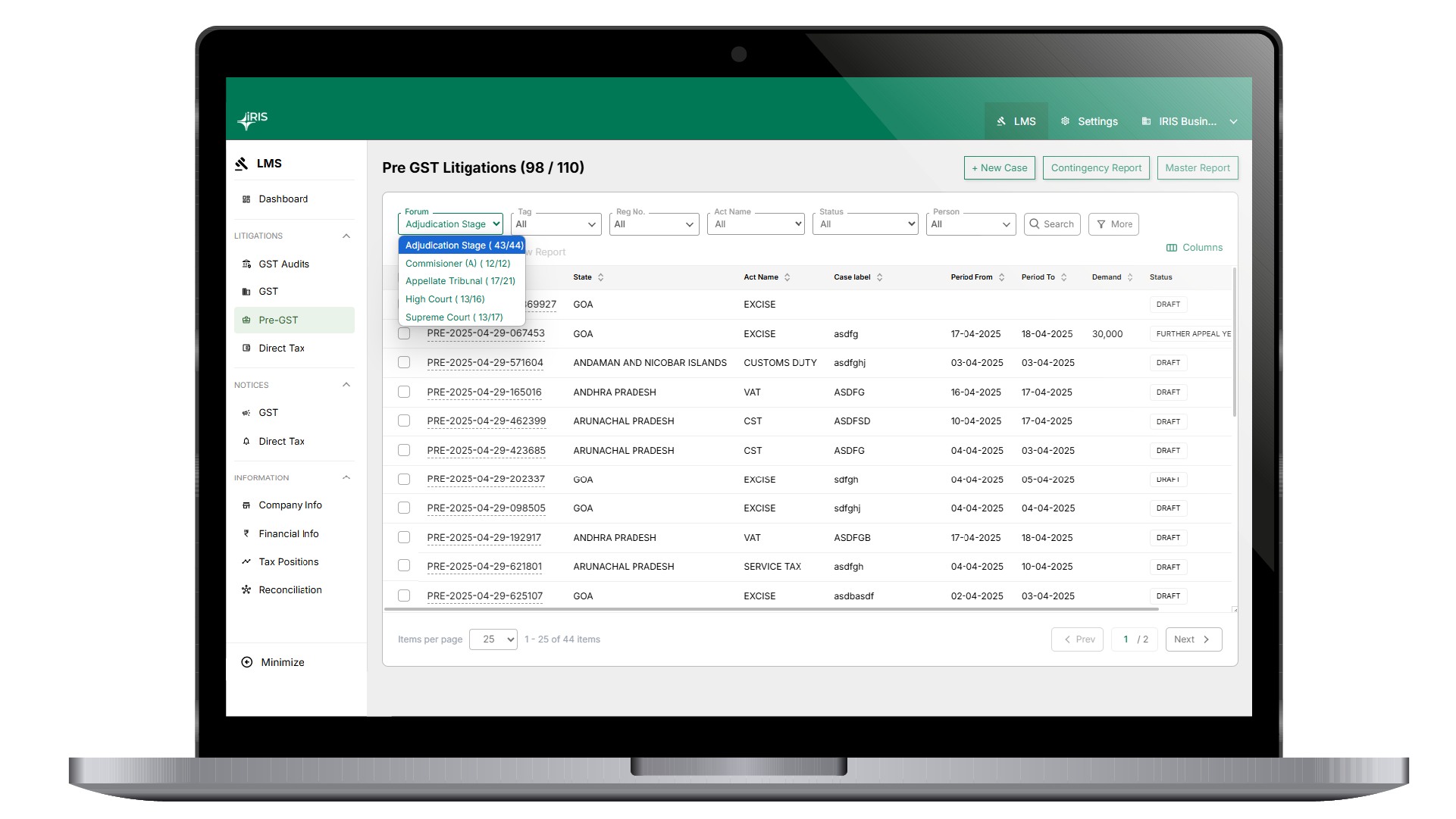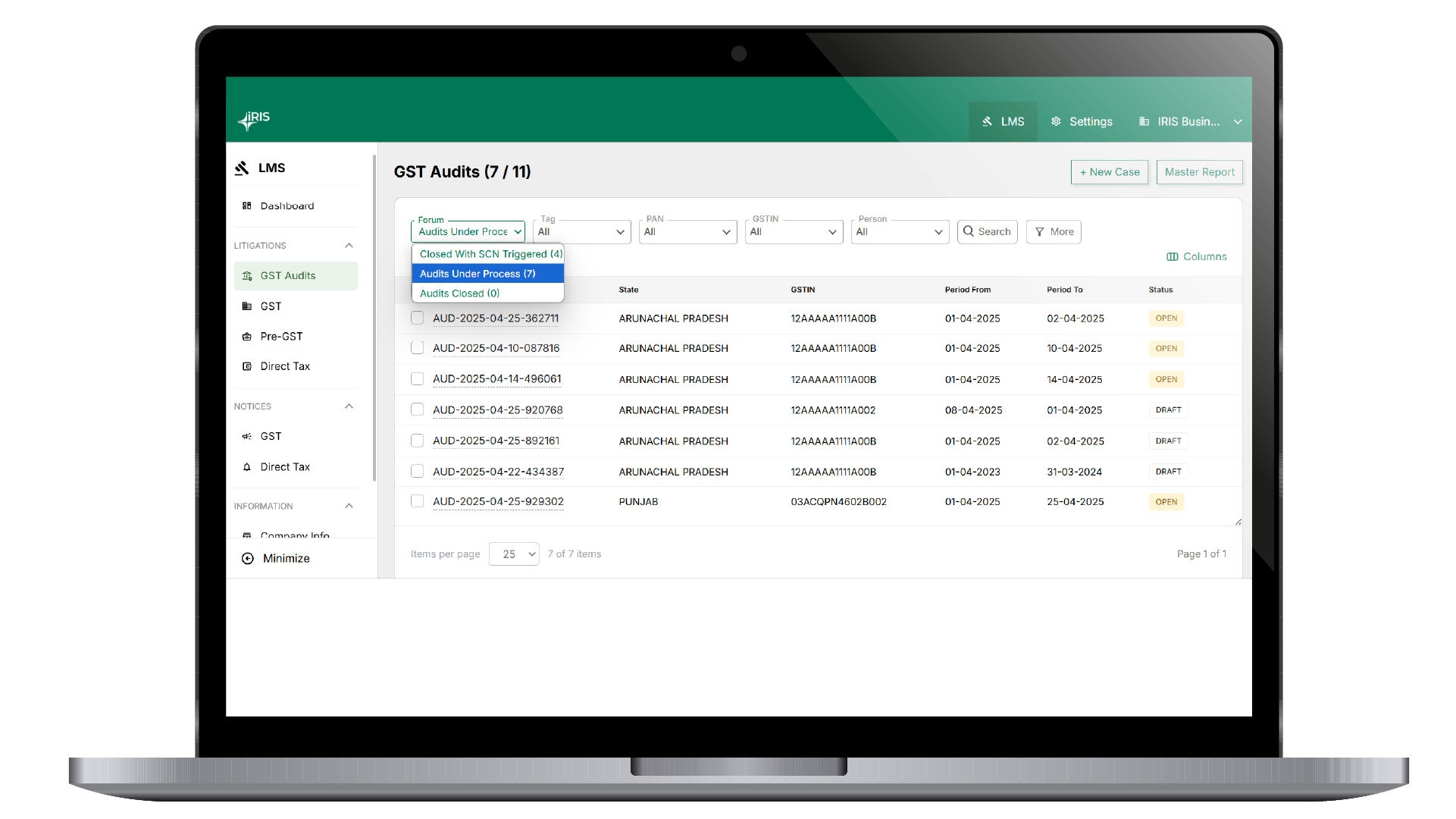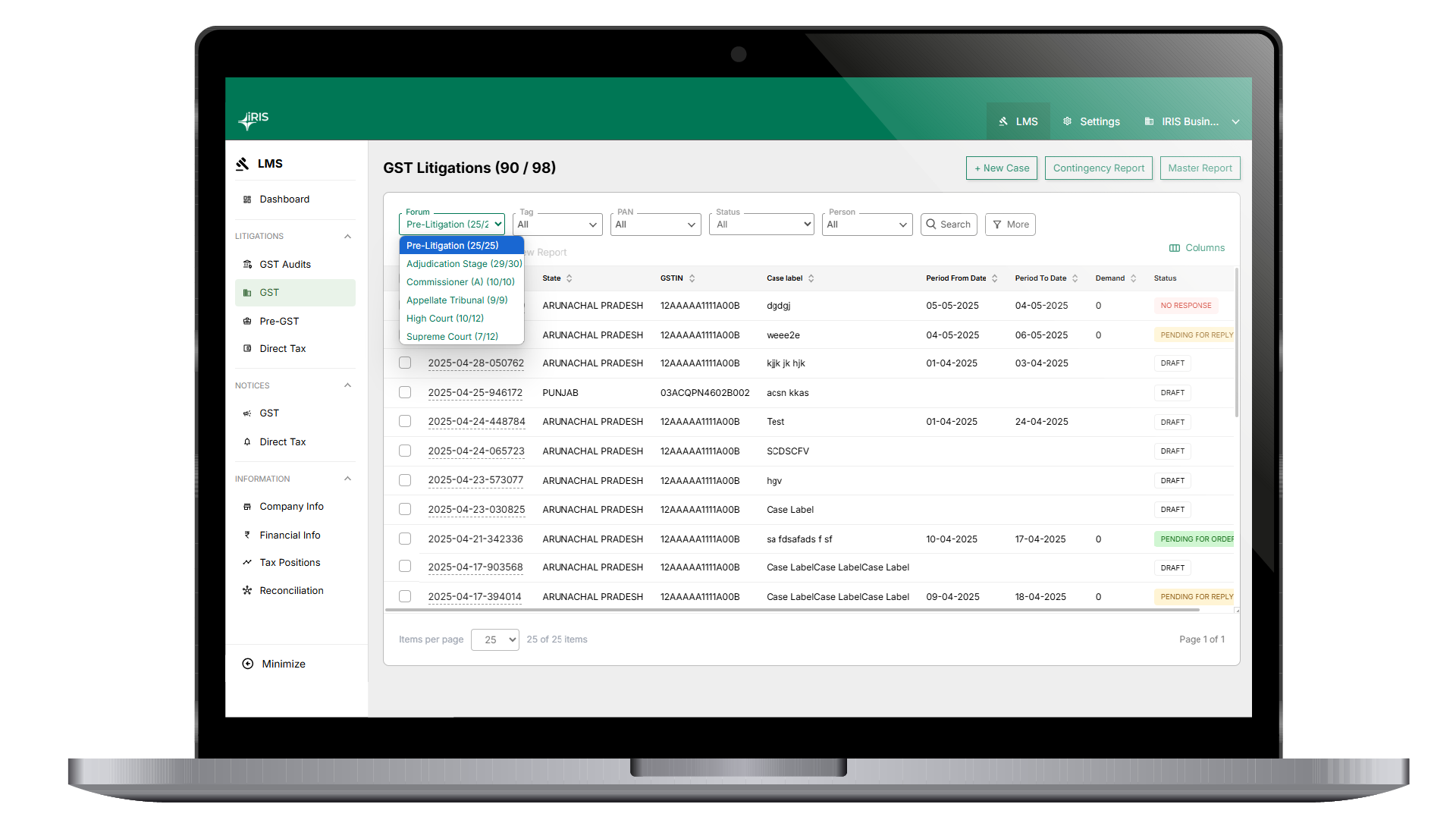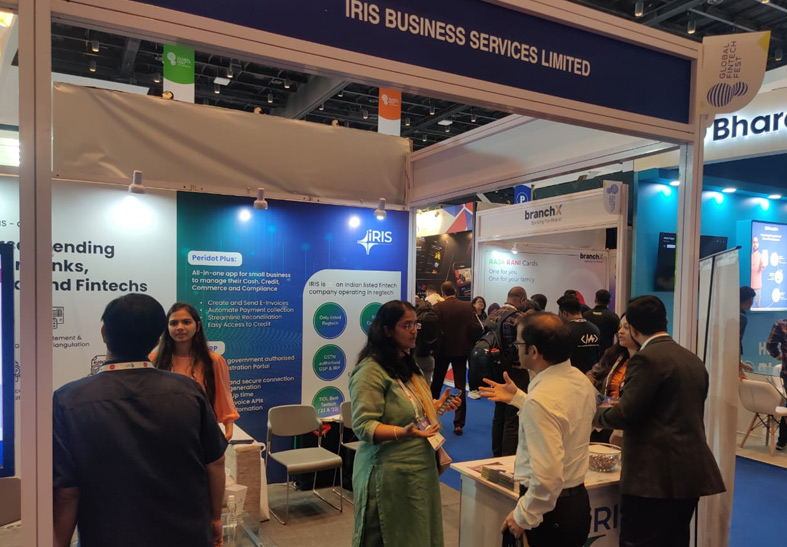IRIS Peridot provides you with insights from data available in your GST Returns. Detailed analyses and drill-down, views of data across periods and concise information; giving your own data a new spin. The current set of data analytics covered in IRIS Peridot Compliance module are
Snapshot
This is an overview of your supplies and tax liability prepared using GSTR 3B. The break-up of supplies into regular, zero-rated (i.e. exports) and Nil, Exempt and Non-GST (as one block) is shown. Overview of tax liability indicates the proportion of cash and ITC used to settle the taxes. RCM(Reverse Charge Mechanism) and other liabilities, such as interest, penalty etc., if reported in GSTR 3B is also shown.
The charts represent one return period at a time and is available for previous 6 months from the latest return filed.
ITC View
The purpose of this report is to provide comparative analysis of ITC for a return period as it appears in GSTR 2A and how it reconciles with ITC in GSTR 2B.
GSTR 2B was introduced in July 2020. It is a static statement which includes invoices once the return is filed by the vendor. GSTR 2A has been there since 2017 and includes invoices as soon as uploaded by vendor on GST system. Read more about GSTR 2A and 2B here.
The ITC report consists of
- Summarised view of ITC as per GSTR 2A, adjustments on account of late filing, non-filing and arrive at ITC as per GSTR 2B. ITC as per GSTR 2B is further analysed based on eligibility.
- For each of the adjustment category, drill-down to vendor level is available. You can identify who are the vendors not yet filed or have done late filing.
- Finally, for each of the vendor, the details of invoices can be checked.
ITC report represents one return period at a time and is available for previous 6 months from the latest GSTR 2B available. As GSTR 2A is a dynamic statement and gets updated as and when vendors file the return for previous periods, for the month which you viewing, you can fetch updated data for GSTR 2A and the report will get re-computed.
GSTR 2A and 2B contain invoices according to sections i.e. invoices, debit note, credit notes, amendments etc. The main summary is computed for regular invoices net of credit and debit notes. For checking ITC related to other sections, apply filter and select the desired section.
The drill-downs and ITC report components are explained below
| Category | Description |
| Net ITC as per GSTR 2A | Source – GSTR 2A Computed using all invoices, debit notes and credit notes |
| *Vendors not yet filed GSTR 1 | Source – GSTR 2A Invoices appearing in GSTR 2A however the return GSTR 1 is not yet filed by the vendor. Such invoices are not included in GSTR 2B |
| *GSTR 1 is filed after due date | Source – GSTR 2A Invoices appearing in GSTR 2A however the return GSTR 1 has been filed after the due date or cut-off date for GSTR 2B. Such invoices are not included in GSTR 2B |
| *Previous months GSTR 1 filed now | Source – GSTR 2B Invoices belonging to previous return periods and have been filed before cut-off date of GSTR 2B for the selected return period. These invoices will not be in GSTR 2A for the selected return period but the earlier period GSTR 2A will be updated |
| Other reasons not Categorized |
The above explained reasons result in differences between GSTR 2A and 2B. However due to changes in GST system processes, due dates etc. sometimes there could differences unexplained. Should there be any, are grouped under this category |
| Total ITC as per 2B | This is derived by adding to and reducing from GSTR 2A, the difference categories as explained |
| ITC Available as per 2B | Source – GSTR 2B For invoices included in GSTR 2B, whether or not ITC is eligible is marked. This category consists of invoices where ITC is eligible |
| *ITC not eligible as per 2B | Source – GSTR 2B For invoices included in GSTR 2B, whether or not ITC is eligible is marked. ITC can be ineligible if the Place of supply state is different from recipients state or GSTR 1 is filed after due-date but within cut-off date for GSTR 2B. |
* For these categories, further drill down is available
1. Vendor Level Summary
2. Invoices pertaining to the vendor selected for drill-down
Reports
This section will include various trends, analyses and perspective of the data filed in returns. Current set of reports included in this section are
| Report | Description |
| Sales Overview | Source – GSTR 3B Period – 6 months based on latest GSTR 3B filed This report shows trend of tax liability against outward supplies over previous 6 months as reported. Outward supplies include Taxable supplies, Export (zero rated), NIL, Exempt and Non-GST. Tax liability corresponding to the outward supplies is represented and does not include RCM liability |
| Average Sales | Source – GSTR 1 Period – 6 months based on latest GSTR 1 filed Based on details of GSTR 1, 6-monthly averages on various parameters are computed. Average sales per customer (at customer PAN and customer GSTIN level separately), per invoice and per month are covered. |
| Purchases Overview | Source – GSTR 2A Period – 6 months based on latest GSTR 2A available Invoices appearing in GSTR 2A however the return GSTR 1 has been filed after the due date or cut-off date for GSTR 2B. Such invoices are not included in GSTR 2B |
| Payment in Cash and ITC | Source – GSTR 3B Period – 6 months based on latest GSTR 3B filed This report shows trend of tax settlement over previous 6 months as reported in GSTR 3B but excludes RCM liability settlement |
| Cross Utilisation of ITC | Source – GSTR 3B Period – 6 months based on latest GSTR 3B filed. View shows one return period at a time Trend of IGST, CGST, SGST and Cess settled using cash or through inter-head adjustment is captured |
